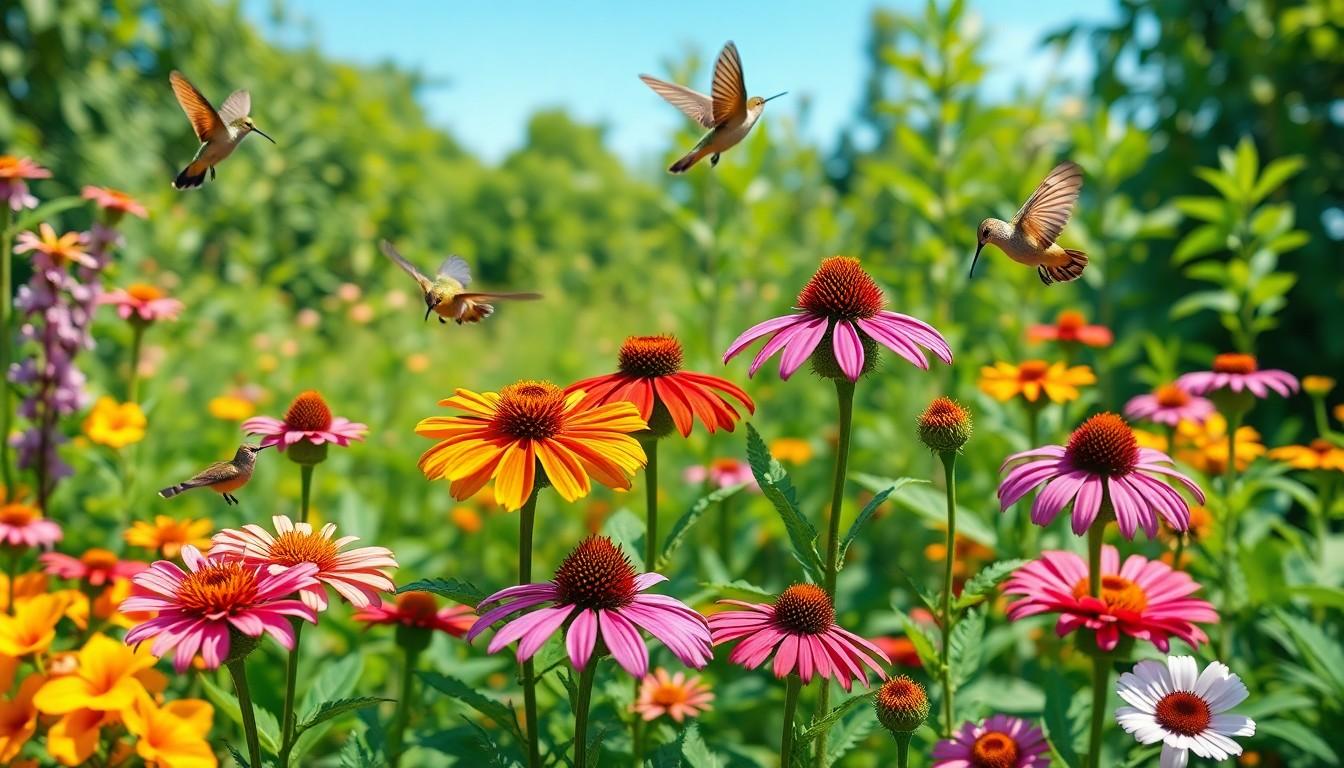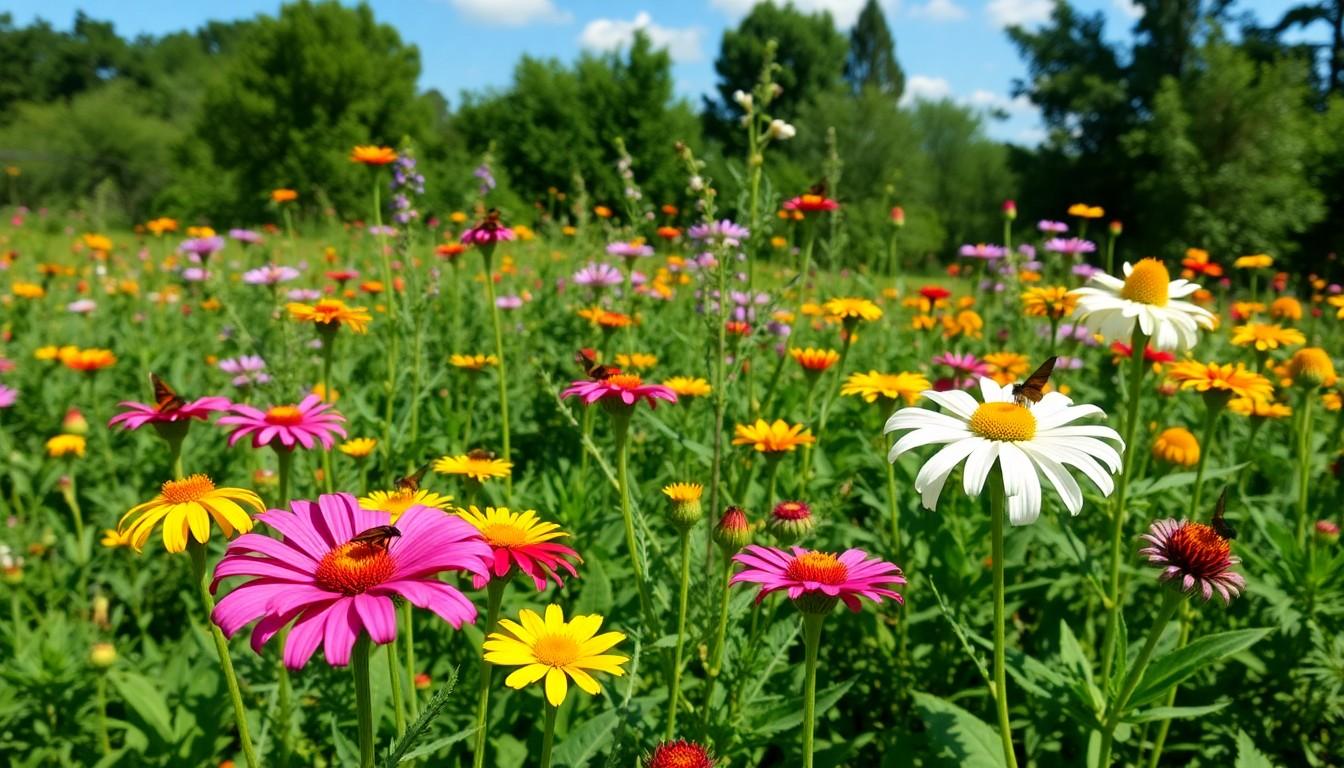Physical Address
304 North Cardinal St.
Dorchester Center, MA 02124

South Carolina’s native plants are like the state’s best-kept secrets, just waiting to be discovered. They’re not just pretty faces; these green wonders are the backbone of local ecosystems, providing food and shelter for wildlife while adding a splash of color to any garden. Imagine strolling through your backyard and spotting a vibrant Carolina Jessamine or a striking Purple Coneflower—nature’s very own confetti!
Native plants of South Carolina serve multiple ecological functions. These species contribute to the local biodiversity, providing habitat and nutrition for various animals, including birds and insects. Some prominent examples include the stunning Carolina Jessamine and the resilient Purple Coneflower.
Many native plants thrive in the region’s unique climate and soil conditions. They demonstrate adaptability to varying moisture levels, which benefits landscape sustainability. Moreover, native species require less maintenance, promoting environmental conservation through reduced resource use.
In addition, native plants have evolved alongside local wildlife. This symbiotic relationship enhances pollination, encouraging vibrant ecosystems. Plants like the Red Maple and Loblolly Pine support these interactions, offering food and shelter to numerous native species.
Cultural significance also exists within native plant life. Indigenous communities have historically relied on these plants for medicinal purposes and traditional practices. Awareness of native plants is crucial for preserving cultural heritage and promoting ecological education.
Choosing native plants for gardens leads to a visually appealing landscape with deep ecological roots. Establishing gardens with species such as Swamp Sunflower and Southern Magnolia fosters biodiversity. These selections provide visual interest and attract local wildlife, enhancing the garden’s role in the ecosystem.
Overall, native South Carolina plants exemplify resilience and adaptability. They highlight the importance of biodiversity and conservation in ensuring a healthy environment for future generations.

Native plants offer numerous advantages that enhance both the environment and the economy. Their presence fosters a thriving ecosystem while supporting sustainable practices in local habitats.
Ecosystems benefit greatly from native plants as they attract native wildlife. These plants provide essential food and habitat, directly supporting species like pollinators and birds. Biodiversity thrives when native plants are incorporated into landscapes. Water conservation becomes easier with native plants, as they require less irrigation due to their adaptability to local conditions. Soil health improves, as many native species develop deep root systems that prevent erosion. Resilience against diseases and pests is another advantage, reducing the need for chemical interventions.
Economic advantages arise from cultivating native plants in landscapes. Homeowners often experience lower maintenance costs, as these plants require less water and fertilizer. Local nurseries gain by promoting the sale of native plants, bolstering regional economies. Additionally, tourism can benefit from the aesthetic appeal of native landscapes, drawing visitors to natural parks and gardens. Native plants also support agricultural practices by enhancing pollinator populations, which in turn boosts crop yields. Local economies thrive when communities embrace the value of native flora.
South Carolina boasts a rich array of native plants that thrive in its diverse ecosystems. These plants offer aesthetic beauty and crucial ecological benefits.
Red Maple serves as a prominent tree, showcasing brilliant red hues in autumn. Loblolly Pine, adapted to coastal plains, grows tall and straight, providing habitat for various wildlife. Southern Magnolia stands out with its large, fragrant flowers, enhancing landscapes. Sweetgum produces distinctive star-shaped leaves and contributes to the forest canopy. These trees not only support biodiversity but also improve air quality and soil stability in their environments.
Native shrubs like American Beautyberry produce clusters of vibrant purple berries that attract birds and other wildlife. Wax Myrtle grows in many soil types, offering fragrant foliage and serving as a natural privacy screen. Yaupon Holly features dark green leaves and red berries, appealing to various birds while requiring minimal upkeep. Florida Anise brings its unique spicy scent, often used in gardens. Each of these shrubs provides essential cover and food sources, enriching local ecosystems.
Purple Coneflower thrives in sunny spots, drawing numerous pollinators with striking purple petals. Black-eyed Susan boasts bright yellow flowers, attracting butterflies and bees while enhancing garden displays. Carolina Jessamine adds cheerful yellow blooms, flourishing in warm weather and climbing structures. Butterfly Milkweed supports monarchs, offering a vital habitat during their migratory journey. These wildflowers play an integral role in promoting biodiversity and sustaining local wildlife.
Caring for native South Carolina plants involves understanding their specific needs. These plants typically thrive in well-draining soils rich in organic matter.
Soil characteristics play a significant role in plant health. Most native species prefer sandy or loamy soils that mimic their natural habitats. Assessing soil pH is essential; many native plants flourish in slightly acidic to neutral conditions, around 6.0 to 7.0. Amending soil with compost enhances its structure and fertility. Regularly testing soil can inform necessary adjustments for optimal growth.
Watering practices greatly influence the survival of native plants. Established plants usually require less frequent watering, as their deep roots tap into moisture reserves. During dry spells, providing supplemental water aids young plants’ establishment. Generally, the rule of thumb is to water deeply once or twice a week depending on rainfall. Observing foliage can indicate needs; wilting leaves often signal drought stress.
Embracing native South Carolina plants offers numerous benefits for both the environment and local communities. These resilient species not only beautify landscapes but also support vital ecosystems by providing food and shelter for wildlife. By choosing native plants, gardeners can create sustainable environments that require less maintenance and promote biodiversity.
The cultural and historical significance of these plants further enhances their value, connecting communities to their roots. As awareness grows about the importance of native flora, more individuals are likely to appreciate their role in fostering a healthier ecosystem. Ultimately, prioritizing native plants contributes to a thriving landscape that benefits both nature and the people of South Carolina.